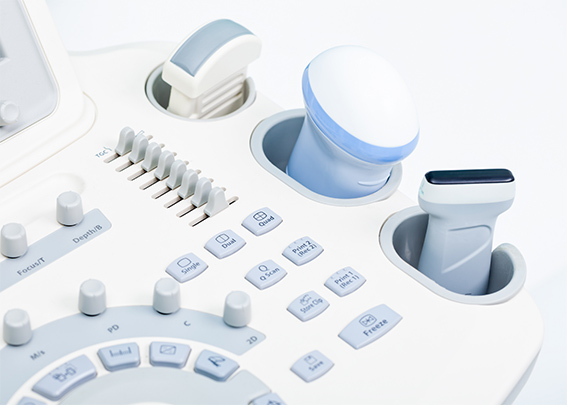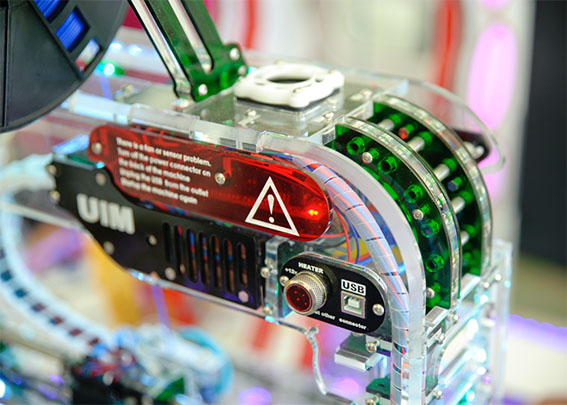
Plastic Injection Moulding is a manufacturing technique that is widely used for the production of plastic products.
The Insight Series
We work with our suppliers to develop products across an array of different sectors that rely on varying materials and a range of manufacturing techniques. It is always fascinating to see how each of these products are made, whether it is the number of hands that touch the products as it is manufactured or the machines that are utilised as part of the production process.

This month, we’re back! We are going to take a look at one of the most widely used plastic forming techniques – plastic injection moulding – and its applications across a wide range of industries. Given the breadth of sectors that this plastic forming technique covers, it should not be a surprise that plastic injection moulding is common within the Asian manufacturing sector. Whether it is solely used for componentry or the product itself, this technique aligns to high quantity, cost-effective products.
Plastic Injection Moulding
So what does this technique involve? If you have ever been to a factory using this technique, you will have noticed the sizeable machinery in the factory. Of course, the machines vary in size depending on the product requirements.
The machine takes the solid plastic (pellets), compresses it and then melts it as prior to it arriving in the injection chamber. The plastic is then injected (as the name would suggest) at high pressure into a customized mould, which is generally made of two parts. The plastic then cools and solidifies and can then be released. Simple!
Moulds & Assembly
As you can imagine, it does get more complicated than this. There are variations in how the moulds interact (two part-moulds, side action moulds and moulds with ‘releasers’) which will depend entirely on the product being made.
In addition, the assembly process ranges from simple to complex. This is based on the budget and the final product being manufactured. Different types of assembly include mechanical, ultrasonic sealed and using adhesives.
Plastic injection moulding is a more automated manufacturing process which relies much less on the ‘human’ touch points. So, what are the benefits of using Asian suppliers given labour is not a significant cost? The largest benefit of leveraging production in Asia is the actual mould tool creation/set-up. This is very labour intensive hence the benefit and as such there are significant reductions in the capital investment required; costs which are often amortized across the product costs, which increases price.
Industry Application
The technique has broad application across a number of sectors. The best way to demonstrate this is to provide some insight on some of the industries where it is commonly used.
1. Medical
The industry demands high quality instruments that are precise and intricate in their design. Plastic injection moulding, with its high-pressure moulding, is capable of producing such instruments in a cost-effective way. The plastic resins used are high quality and can deliver superior mechanical properties such as high tensile strength and resistance to high temperatures.

2. Shoe Industry
The technique is also used widely in the shoe industry. Yes, shoes are often made of leather and fabric uppers. But you will note that most shoes use plastic injecting moulding to form the sole. This provides the shape and durability and gives you that little bit of cushioning!
3. Electronics
Plastic is a good protector against dust and dirt and does not trap moisture. So when you are dealing with electronic components and circuit boards on keyboards and computers, plastic injection moulding is the perfect technique to create the casing and the frames. Given the infiltration of electronic items into our everyday lives, you should now be getting a sense of the importance of this manufacturing technique.
There are other industries that can also be added to the list, such as food and beverages, toy and building.
Advantages of Plastic Injection Moulding
We have seen the industries to which it is applied, but what are the benefits from a manufacturing perspective?
As a manufacturing process, plastic injection moulding has lots of advantages:
1. Quality Replication
With the right moulds and resins, it should be possible to reproduce the same product thousands of times to the same quality.
2. Low Cost
Once the moulds have been made and evaluated (and invested in) the cost per unit is relatively low compared with other materials and manufacturing processes. The lack of waste also factors into this as well (unlike CNC which has a much higher wastage).
3. Mass Production
When the machine is operating, the injection cycle should be a matter of minutes (or even seconds!) per unit. It is therefore an incredibly quick and effective manufacturing process for mass, large scale production runs.
Summary
Industrial manufacturing is a fast-growing sector for offshore manufacturing, particularly across Asia where relative share has grown significantly, which includes products that are made using plastic injection moulding techniques.
At ET2C, we look to provide our clients with insights across our manufacturing base. We already manufacture a range of industrial products for our clients across multiple markets. For more information. please contact us at contact@et2cint.com.



